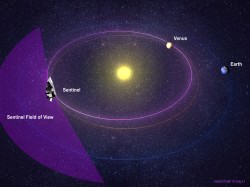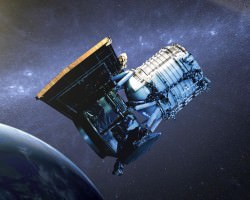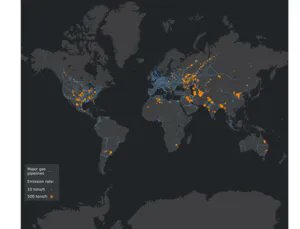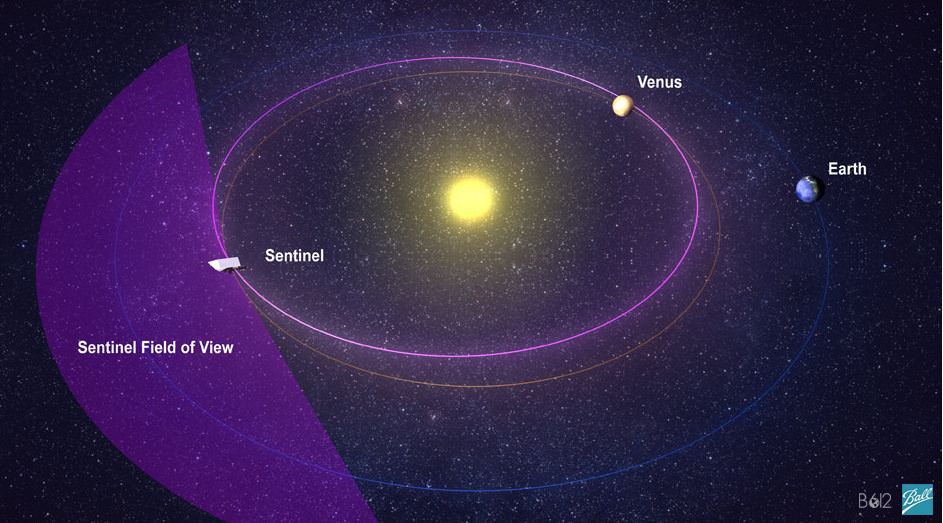Methane is one of the most important greenhouse gases, despite the overwhelming interest in carbon dioxide emissions as the primary source of climate change. It is hard to track, though, as its sources can range from leaking chemical and gas pipelines to literal farm fields. Now an energy analytics company has a system they believe can track otherwise undocumented methane emissions in a way that could prove helpful in eliminating them altogether.
Continue reading “Satellites can now see Exactly Where Methane is Being Dumped Into the Atmosphere”Carnival of Space #357
Welcome, come in to the 357th Carnival of Space! The carnival is a community of space science and astronomy writers and bloggers, who submit their best work each week for your benefit. I’m Susie Murph, part of the team at Universe Today and now, on to this week’s stories!
We’re going to start off with a double blast from the past, courtesy of CosmoQuest! This week, they’re featuring Stuart Robbins’s blog post from January 13, 2012, titled “Perspective on the Apollo 15 Landing Site.” He explores the region of the Moon that is the current home of the MoonMappers images that YOU are still mapping and exploring today – the Apollo 15 landing site area. It’s a neat place and we can study a lot of things there. Due to a quirk of optics and angles, you can even imagine you’re flying towards it.
Next, we stay with Cosmoquest’s Moon Mappers as they highlight the interesting discovery that the groundbreaking Soviet Lunakhod 2 lunar rover traveled farther than earlier estimated on it’s mission in 1972. Visit MoonMappers at Cosmoquest for more great stories!
Moving through history, we travel over to io9’s Space blog for a history of the American Space Shuttle disasters is a grim reminder of the danger of space travel. Just released is Major Malfunction, a documentary on the two Shuttle catastrophes. Major malfunction is an understatement for the destruction of Space Shuttle Challenger moments after launch in 1986, and the loss of Space Shuttle Columbia during re-entry in 2003.
Next at io9, we visit Mars to view the magnificent Draa, which are ancient landforms created from waves of sand. Check out the article and it’s images here.
We also have another article from io9, which new astronaut Reid Wiseman recounts his first adventurous days in space.
Now we’ll jump over for some gorgeous views from the Chandra X-Ray Observatory! One of their new images is a glorious view of the Whirlpool spiral galaxy which radiates with fantastic points of x-ray light. These image is breath-taking!
Want more gorgeous images? Visit Brownspaceman.com to see his discussion of the Tulip Nebula, which is a composite image which also maps the emissions from this incredible nebula.
Next, we head over to the Meridani Journalfor coverage of a major find in the search for exoplanets. A new world which is more than twice as large as Earth and about 17 times heavier has been discovered, a sort of “mega-Earth” as some have referred to it.
The NextBigFuture Blog lives up to it’s name by bringing us two interesting stories from Elon Musk and his company SpaceX. First, he points out that the key is reusability. Musk said the crewed Dragon is designed to land softly back on Earth and be rapidly turned around for another flight — possibly on the same day. Spacex is aiming for 10 flights without any significant refurbishment for the Dragon v2. The thing that will have to be refurbished is the main heat shield. Further improved heat shield materials [later versions of PICA-X] would mean Spacex could aim for 100 reusable flights.
We then head over to the Urban Astronomer, where recent observations of a very near pair of brown dwarf objects has led to something new: We’re watching the weather on stars themselves!
Finally, we return to Universe Today for some interesting potential missions. First, the B612 Foundation’s privately-funded Sentinel mission, once launched and placed in orbit around the Sun in 2018, will hunt for near-Earth asteroids down to about 140 meters in size using the most advanced infrared imaging technology, without government red tape to hamper the mission. Next, the NASA Innovative Advanced Concepts office announced a dozen far-flung drawing-board proposals that have received $100,000 in Phase 1 funding for the next 9-12 months, one of which is a balloon for exploring Titan. We’re looking forward to hearing about these projects and many others in the coming years.
That’s it for this week’s Carnival! See you all next time!
And if you’re interested in looking back, here’s an archive to all the past Carnivals of Space. If you’ve got a space-related blog, you should really join the carnival. Just email an entry to [email protected], and the next host will link to it. It will help get awareness out there about your writing, help you meet others in the space community – and community is what blogging is all about. And if you really want to help out, sign up to be a host. Send an email to the above address.
Surprise: Earth Is Hit By a Lot More Asteroids Than You Thought
“The fact that none of these asteroid impacts shown in the video was detected in advance is proof that the only thing preventing a catastrophe from a ‘city-killer’ sized asteroid is blind luck.”
– Ed Lu, B612 Foundation CEO and former NASA astronaut
When we think of recent large asteroid impacts on Earth, only a handful may come to mind. In particular, one is the forest-flattening 1908 Tunguska explosion over Siberia (which may have been the result of a comet) and another is the February 2013 meteor that exploded over Chelyabinsk, shattering windows with its air blast. Both occurred in Russia, the largest country on Earth, and had human witnesses — in the case of the latter many witnesses thanks to today’s ubiquitous dashboard cameras.
While it’s true that those two observed events took place 105 years apart, there have been many, many more large-scale asteroid impacts around the world that people have not witnessed, if only due to their remote locations… impact events that, if they or ones like them ever occurred above a city or populated area, could result in destruction of property, injuries to people, or worse.
(And I’m only referring to the ones we’ve found out about over the past 13 years.)
A new video released by the B612 Foundation shows a visualization of data collected by a global nuclear weapons test network. It reveals 26 explosive events recorded from 2000 to 2013 that were not the result of nuclear detonations — these were impacts by asteroids, ranging from one to 600 kilotons in energy output.
Update: a list of the 26 aforementioned impacts and their energy outputs is below:
8/25/2000 (1-9 kilotons) North Pacific Ocean
4/23/2001 (1-9 kilotons) North Pacific Ocean
3/9/2002 (1-9 kilotons) North Pacific Ocean
6/6/2002 (20+ kilotons) Mediterranean Sea
11/10/2002 (1-9 kilotons) North Pacific Ocean
9/3/2004 (20+ kilotons) Southern Ocean
10/7/2004 (10-20 kilotons) Indian Ocean
10/26/2005 (1-9 kilotons) South Pacific Ocean
11/9/2005 (1-9 kilotons) New South Wales, Australia
2/6/2006 (1-9 kilotons) South Atlantic Ocean
5/21/2006 (1-9 kilotons) South Atlantic Ocean
8/9/2006 (1-9 kilotons) Indian Ocean
9/2/2006 (1-9 kilotons) Indian Ocean
10/2/2006 (1-9 kilotons) Arabian Sea
12/9/2006 (10-20 kilotons) Egypt
9/22/2007 (1-9 kilotons) Indian Ocean
12/26/2007 (1-9 kilotons) South Pacific Ocean
10/7/2008 (1-9 kilotons) Sudan
10/8/2009 (20+ kilotons) South Sulawesi, Indonesia
9/3/2010 (10-20 kilotons) South Pacific Ocean
12/25/2010 (1-9 kilotons) Tasman Sea
4/22/2012 (1-9 kilotons) California, USA
2/15/2013, (20+ kilotons) Chelyabinsk Oblast, Russia
4/21/2013 (1-9 kilotons) Santiago del Estero, Argentina
4/30/2013 (10-20 kilotons) North Atlantic Ocean
(Source: B612 Foundation)
To include the traditonally macabre comparison, the bomb used to destroy Hiroshima at the end of World War II was about 15 kilotons; the Nagasaki bomb was 20.
This evening former NASA astronauts Ed Lu, Tom Jones, and Apollo 8 astronaut Bill Anders will present this video to the public at a live Q&A event at the Museum of Flight in Seattle, Washington.
CEO and co-founder of the B612 Foundation, Ed Lu is working to increase awareness of asteroids and near-Earth objects with the ultimate goal of building and launching Sentinel, an infrared observatory that will search for and identify as-yet unknown objects with orbits that intersect Earth’s. The event, titled “Saving the Earth by Keeping Big Asteroids Away,” will be held at 6 p.m. PDT. It is free to the public and the visualization above is now available online on the B612 Foundation website. A press event will also be taking place at 11:30 a.m. PDT, and will be streamed live here.
Currently there is no comprehensive dynamic map of our inner solar system showing the positions and trajectories of these asteroids that might threaten Earth. The citizens of Earth are essentially flying around the Solar System with eyes closed. Asteroids have struck Earth before, and they will again – unless we do something about it.
– B612 Foundation
Want to support the Sentinel mission? Donate online here.
Added 4/24: The April 22 press conference at the Museum of Flight can be watched in its entirety below:
Technical note: While B612 and Ed Lu are presenting a new visualization on April 22, the data behind it are not entirely new. Previous surveys on NEA populations have determined within reasonable parameters the number of objects and likelihood of future impacts of varying sizes using data from WISE and ground-based observatories… see a series of slides by Alan Harris of JPL/Caltech here. (ht Amy Mainzer)
Also, if you have questions on the asteroid visualization, there are some FAQs on the B612 site here.
Astronauts to Reveal Sobering Data on Asteroid Impacts

This Earth Day, Tuesday, April 22, three former NASA astronauts will present new evidence that our planet has experienced many more large-scale asteroid impacts over the past decade than previously thought… three to ten times more, in fact. A new visualization of data from a nuclear weapons warning network, to be unveiled by B612 Foundation CEO Ed Lu during the evening event at Seattle’s Museum of Flight, shows that “the only thing preventing a catastrophe from a ‘city-killer’ sized asteroid is blind luck.”
Since 2001, 26 atomic-bomb-scale explosions have occurred in remote locations around the world, far from populated areas, made evident by a nuclear weapons test warning network. In a recent press release B612 Foundation CEO Ed Lu states:
“This network has detected 26 multi-kiloton explosions since 2001, all of which are due to asteroid impacts. It shows that asteroid impacts are NOT rare — but actually 3-10 times more common than we previously thought. The fact that none of these asteroid impacts shown in the video was detected in advance is proof that the only thing preventing a catastrophe from a ‘city-killer’ sized asteroid is blind luck. The goal of the B612 Sentinel mission is to find and track asteroids decades before they hit Earth, allowing us to easily deflect them.”

The B612 Foundation is partnered with Ball Aerospace to build the Sentinel Infrared Space Telescope Mission. Once positioned in solar orbit closer to the Sun from Earth, Sentinel will look outwards in infrared to detect hundreds of thousands of as-yet unknown near-Earth objects over 140 meters in size. The privately-funded spacecraft is slated to launch in 2017-18 aboard a SpaceX Falcon 9 rocket.
In addition to Lu, Space Shuttle astronaut Tom Jones and Apollo 8 astronaut Bill Anders will be speaking at the event, titled “Saving the Earth by Keeping Big Asteroids Away.”
The event will be held at 6 p.m. PDT at the Museum of Flight in Seattle, WA. It is free to the public and the visualization will be made available online on the B612 Foundation website.
Want to support the Sentinel mission? Donate online here.
How Can We Find Killer Asteroids?
On the morning of February 15, 2013, people in western Russia were dazzled by an incredibly bright meteor blazing a fiery contrail across the sky. A few minutes later a shockwave struck, shaking the buildings and blowing out windows. 1,500 people went to the hospital with injuries from shattered glass. This was the Chelyabinsk meteor, a chunk of rock that struck the atmosphere going almost 19 kilometers per second. Astronomers estimate that it was 15-20 meters across and weighed around 12,000 metric tonnes.
Here’s the crazy part. It was the largest known object to strike the atmosphere since the Tunguska explosion in 1908. Catastrophic impacts have shaped the evolution of life on Earth. Once every 65 million years or so, there’s an impact so destructive, it wipes out almost all life on Earth. The bad news is the Chelyabinsk event was a surprise. The asteroid came out of nowhere. We need to find all the potential killer asteroids, and understand what risks we face.
“I’m Ned Wright…”
That’s Dr. Ned Wright. He’s a professor of physics and astronomy at UCLA, and the Primary Investigator for the Wide-field Infrared Survey Explorer mission; a space telescope that looks for low temperature objects in the infrared spectrum.
“I think the best way to protect the Earth from asteroids is to get out and look very assiduously to find all the hazardous asteroids. Although astronomers have been finding and cataloging asteroids for decades, we still only have a fraction of the dangerous asteroids tracked. The large continent destroyers have mostly been found, but there’s a whole class of smaller, city killers out there, and they’re almost entirely unknown. There are… these dark asteroids that may not be the most dominant part of the population but they certainly can be a very hazardous subset, it’s important to do the observations in the infrared. So you actually, instead of looking for the ones that reflect the most light, you look for the ones that have the biggest area and therefore the ones that are the heaviest and can do the most damage. And so, I think that an infrared survey is the way to go.”
“In the infrared wavelengths, we can find these objects because they’re large, not because they’re bright. And to really do this right, we need a space-based infrared observatory capable of surveying vast areas of the sky, searching for anything moving.”
The WISE mission has been offline for a few years, but WISE is actually being reactivated right now to look for more Near Earth Objects, so we’re currently cooled down to 93 K, and when we get to 73 K, which is where we were when we turned off in 2011 we’ll probably be able to go out and find more Near Earth Objects.
Note: this interview was recorded in November, 2013. WISE resumed operations in December 23, 2013

But to really find the vast majority of dangerous asteroids, you need a specialized mission. One proposal is the Near Earth Asteroid Camera, or NEOCam because it’d be much better to have a telescope that was slightly colder than the 73 K WISE is with coolant, and you can do that by getting away from the Earth. and so the NEOcam telescope is designed to go a million and a half kilometers from the Earth and therefore it would be quite cold, about 35 K and at that temperature, it can operate longer into the infrared and do a very sensitive survey for asteroids.
NEOCam is just one idea. There’s also the Sentinel proposal from B612 Foundation. It’s also an infrared survey and it would go into an orbit like Venus’ orbit, so it would be hundreds of millions of km away from Earth, but not orbiting around Venus, because that would be too hot as well and then with an infrared telescope, it would survey for asteroids.
NEOCam and Sentinel would operate for years, scanning the sky in the infrared to find all of the really hazardous asteroids. You wouldn’t be able to necessarily find the ones the size of the one that hit Chelyabinsk, and so that broke some windows, but it didn’t kill people, didn’t knock buildings down. So that’s definitely a hazard, but not the city destroying hazard that a 100 meter diameter asteroid would be.
We live in a cosmic shooting gallery. Rocks from space impact the Earth all the time, our next dangerous asteroid is out there, somewhere. Let’s build a space-based infrared survey mission so we can find it, before it finds us.
How Can We Stop An Asteroid?
“It’s like looking for a charcoal briquette in the dark,” says Bill Nye the Science Guy in this new video from AsapSCIENCE… except he’s talking about briquettes hundreds of meters wide whizzing past our planet upwards of 8, 9, 10, even 20 kilometers per second — and much, much denser than charcoal.
Near-Earth asteroids are out there (and on occasion they even come in here) and, as the planet’s only technologically advanced spacefaring species, you could say the onus is on us to prevent a major asteroid impact from occurring, if at all possible — whether to avoid damage in a populated area or the next mass extinction event. But how can we even find all these sooty space rocks and, once we do, what can be done to stop any headed our way?
Watch the video (and then when you’re done, go visit the B612 Foundation’s Sentinel page to learn more about an upcoming mission to bag some of those space briquettes.)




